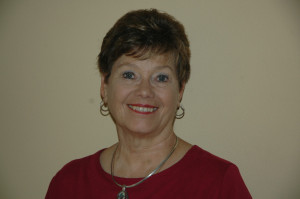A journey that will help you convert your ideas into an image on canvas
This course is intended to help you discover how to translate your ideas into images on
the canvas. During the course, you will learn techniques to help you give form to your ideas. If
you are a beginner, you will learn that painting is easy and fun. If you already are familiar with
painting, you will refresh old knowledge and reapply known skills while exploring new ways of
expressing an idea.
The class will have discussions of methods to capture and record ideas and to turn them
into acrylic paintings. There will be discussions on how to mix colors, establish values, and
develop a strong composition.
Materials and 1 st assignment:
2 or 3 sheets of poster board (large cut into 11 x14 cards)
one 24 x 30 primed canvas or similar support
For the first class you will make a recipe card for the colors in your palette. Cut out 2 or 3 cards
of poster board to size 11 x14 . In the Horizontal position (14” direction) 4” in from the left edge
draw a vertical line followed by 7 more vertical lines spaced one inch apart to create columns.
Then, ½” in from the top (11” side) draw a horizontal line full length (14”) followed by 10 more
horizontal lines spaced one inch apart to create rows. You will have ½” left at the bottom.
Label In the top most row left to right: Color Name (Col 1), Hue (Col 2), Hue+White (Col 3)
Hue+Gray (Col 4),Hue+Black (Col 5), Hue+Warm (Col 6),Hue+Cool (Col 7), Hue+Compliment (Col
8); last column is to add white to those in experimentation (Col 9).
Label in the bottom most row left to right: Color Name (Col 1),Color (Col 2), Tint (Col 3), Tone
(Col 4), Shade (Col 5), Warm (Col 6), Cool (Col 7), Neutral (Col 8).
In class I will show you how to begin your color recipe cards for every color in your palette. I
recommend making a recipe card one each for the reds, blues, greens, yellows (and violets if you
have a variety of hues)
Acrylic heavy body tube paints I use professional grade in Liquitex or Golden (student
grades do not carry as much pigment):
Pyrole Red or Napthol red
Cadmium red light
Quinicrodone Magenta
Phtalo Green Yellow Shade
Chromium oxide green
Phthalo Blue Green Shade
Ultramarine Blue
Cadmium Yellow Lt
Hansa Yellow lt
Raw Sienna
Burnt Umber
Payne’s Gray
Titanium Oxide White
Gesso, gloss medium,
Brushes: 1 ½” Sash, 1” flat, ¾” flat (8 & 10), 8 & 10 filbert, ½” angled, 1” fan, ½” fan, liner brush
I use synthetic fiber brushes which hold up best when acrylics are used opaquely, sables are ok if
you use acrylics like a water color but are generally too flimsy for a heavier application in
acrylics. I like the long handles, but that is a personal preference.
Miscellaneous Items:
Easel if you work upright or standing (floors must be covered for easel work, so
bring painters kraft paper to put on the floor. I will have covers for the tables)
Sketch book, drawing tools of your choice or a No2 pencil, vine charcoal
Photographs, objects that look interesting to paint
Small Water spray bottle, 2 water containers, sponge, paper towels
Mixing palette (can be anything from a muffin pan to palette paper on a board,
aluminum pie plates or plastic plates work well also)
Plastic wrap to cover open palette
Straight edge and scotch tape
 SHARON L. HARRIS
SHARON L. HARRIS
2795 W. Sunrise St., Lecanto, Fl. 34461 352-527- 9372
WWW.SHARONHARRISART.COM [email protected]
Sharon did undergraduate work in the Art Department at Texas Tech University and completed a Bachelor of
Science at Appalachian State University, Boone, NC, in Industrial Art with a fine art minor. She has received
critical acclaim for her artworks in drawing, painting, pottery and sculpture throughout the Southeast. In North
Carolina at the North Carolina Museum of Art (Raleigh), Charlotte, Fayetteville, Wilmington, Oak Island,
Southport, Wilson and in Oklahoma and Truman State University in Missouri. In Florida her works have received
critical acclaim in Ocala, Inverness, St Pete Beach and Citrus County. Though art was always a part of her life,
after college she pursued a career as a project architect for nationally known AE firms, followed by ownership of
a design/build contracting company, ProDesigns, Inc. Since moving to Florida after retirement in 1998, Sharon
served as Vice President and then for six years as the President of the Art Center during which time she was
instrumental in building the Art Center Theatre and enlarging/renovating the Art & Education Building on the Art
Center Campus. She now spends time in her painting and pottery studios, is Director of the Academy of the
Arts and teaches acrylic painting plus the elements of design to adults and youths at the Art Center.